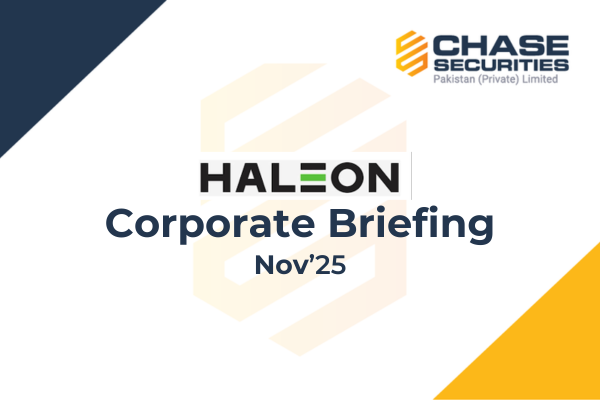Haleon reported earnings per share of PKR 39.18 in 9MCY25 (9MCY24: PKR 27.36). In 3QCY25, EPS stood at PKR 13.80 (3QCY24: 11.36). Revenue in 9MCY25 grew by 17%. The 17% growth comprises approximately 10% from pricing impact and 7% from volume impact.
The strategic intent moving forward is to commit to a robust volume-led growth strategy, as volume is the largest driver for consumer acquisition. Product portfolio is heavily weighted by Panadol, CaC and Oral products, with revenue mix being 49%, 22% and 17% respectively.
Panadol Ultra was nationally launched in March/April 2025 (following a December launch in Karachi). It is one of the only globally approved formulations in the market. Centrum is the world’s largest multivitamin brand was launched in Pakistan (Adult and Silver variants). Management plans to continue evolving the category, noting the huge potential for growth given the low multivitamin usage in Pakistan.
Panadol has 40%+ market share within the analgesics segment. The essential portion of the Panadol portfolio is approximately 75%. Sensodyne has more than 70% market share in the sensitivity segment. CaC 1000 has above 30-35% market share in the Bone & Joint segment. Currently, approximately 36% of the overall portfolio is outsourced. CaC 1000 is fully manufactured in-house.
Haleon has invested approximately USD 10 million in the Jamshoro facility to switch from toll manufacturing of Panadol to in-house manufacturing. The switch to in-house Panadol production is expected to go live for some SKUs in Q3 and others in Q4. This shift will reduce the outsourced portfolio to about 4%. The management views increased exports as critical to help decrease Pakistan’s trade deficit. Haleon is actively working to open export channels to 18 to 19 countries, mainly in South East Asia and Africa. The registration and certification process for pharmaceutical exports is lengthy, typically taking two to five years per country.
The company is looking to export its entire product portfolio, as different countries have different needs. Export margins are noted as healthy. Haleon currently does not export to Afghanistan and is therefore not impacted by recent border closures. While APIs are imported (60% imported, 40% sourced locally from vendors who import them from India/China), competitive conversion cost and labor cost give HPL an advantage. The pharmaceutical industry faces two major continuing challenges.
First being the need for stable, long-term policy making and regulations, avoiding constant short-term changes that deter investment. Second being the low-price threshold has not been updated by the government to align with inflation, despite promises, creating challenges for low-price drugs. Management emphasized that the effects of de-regulation should be evaluated over a three-to-five-year period to see the full benefit. In the long term, prices are expected to stabilize in line with inflation. The company is currently importing finished Centrum tablets from Italy.
The regulator requires nutraceuticals and pharmaceuticals to be manufactured in separate facilities, making local production of Centrum difficult. Haleon is actively engaged with DRAP (Drug Regulatory Authority of Pakistan) to allow nutraceutical manufacturing in pharmaceutical facilities, arguing that the higher standards of pharmaceutical facilities should permit this. If this is allowed, Haleon intends to in-house all Centrum manufacturing.
Going forward, management expects to sustain and improve the current gross margins ~38% year-on-year through continued efficiencies and cost optimization, while taking only the necessary price increases that align with inflation. In the short term, Haleon is focusing on entering the menstrual relief and migraine relief segments through Panadol.

Important Disclosures
Disclaimer: This report has been prepared by Chase Securities Pakistan (Private) Limited and is provided for information purposes only. Under no circumstances, this is to be used or considered as an offer to sell or solicitation or any offer to buy. While reasonable care has been taken to ensure that the information contained in this report is not untrue or misleading at the time of its publication, Chase Securities makes no representation as to its accuracy or completeness and it should not be relied upon as such. From time to time, Chase Securities and/or any of its officers or directors may, as permitted by applicable laws, have a position, or otherwise be interested in any transaction, in any securities directly or indirectly subject of this report Chase Securities as a firm may have business relationships, including investment banking relationships with the companies referred to in this report This report is provided only for the information of professional advisers who are expected to make their own investment decisions without undue reliance on this report and Chase Securities accepts no responsibility whatsoever for any direct or indirect consequential loss arising from any use of this report or its contents At the same time, it should be noted that investments in capital markets are also subject to market risks This report may not be reproduced, distributed or published by any recipient for any purpose.

